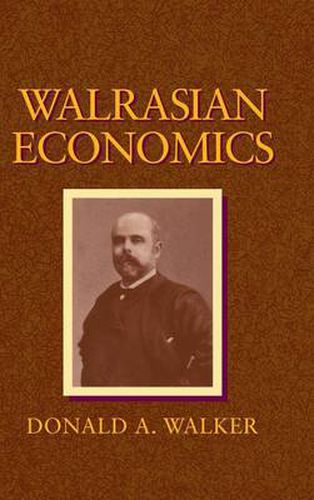Readings Newsletter
Become a Readings Member to make your shopping experience even easier.
Sign in or sign up for free!
You’re not far away from qualifying for FREE standard shipping within Australia
You’ve qualified for FREE standard shipping within Australia
The cart is loading…






In order to understand the various strands of general equilibrium theory, why it has taken the forms that it has since the time of Leon Walras, and to appreciate fully a view of the state of general equilibrium theorising, it is essential to understand Walras’s work and examine its influence. The first section of this book accordingly examines the foundations of Walras’s work. These include his philosophical and methodological approach to economic modelling, his views on human nature, and the basic components of his general equilibrium models. The second section examines how the influence of his ideas has been manifested in the theorising of his successors, surveying the models of theorists such as H. L. Moore, Vilfredo Pareto, Knut Wicksell, Gustav Cassel, Abraham Wald, John von Neumann, J. R. Hicks, Kenneth Arrow, and Gerard Debreu. The treatment also examines models of many types in which Walras’s influence is explicitly acknowledged.
$9.00 standard shipping within Australia
FREE standard shipping within Australia for orders over $100.00
Express & International shipping calculated at checkout
In order to understand the various strands of general equilibrium theory, why it has taken the forms that it has since the time of Leon Walras, and to appreciate fully a view of the state of general equilibrium theorising, it is essential to understand Walras’s work and examine its influence. The first section of this book accordingly examines the foundations of Walras’s work. These include his philosophical and methodological approach to economic modelling, his views on human nature, and the basic components of his general equilibrium models. The second section examines how the influence of his ideas has been manifested in the theorising of his successors, surveying the models of theorists such as H. L. Moore, Vilfredo Pareto, Knut Wicksell, Gustav Cassel, Abraham Wald, John von Neumann, J. R. Hicks, Kenneth Arrow, and Gerard Debreu. The treatment also examines models of many types in which Walras’s influence is explicitly acknowledged.